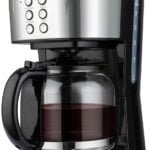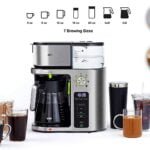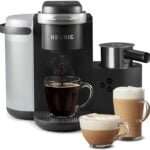Heating and cooling make up a large share of household energy costs, and many homeowners end up spending more than needed when their systems run inefficiently or operate unnecessarily. Effective HVAC usage and maintenance involves combining smart habits, modern controls, and routine upkeep to optimize performance. By taking a thoughtful approach, you can maintain comfortable temperatures throughout the year while keeping energy bills in check.
Understanding where energy goes
Your HVAC system consumes power every time it starts, runs, or cycles unnecessarily. Factors like clogged filters, poor insulation, leaky ducts, or outdated thermostats force the system to work harder to maintain temperature. Addressing these inefficiencies first provides immediate energy savings without replacing equipment.
1. Adjust thermostat settings strategically
The thermostat has the greatest influence on your energy bill. Setting it just a few degrees higher in summer or lower in winter makes a big difference. For cooling, 24–25°C (75–77°F) is comfortable for most homes. For heating, 19–20°C (66–68°F) works efficiently when you’re home, and slightly lower at night or when away.
Tips:
- Use the “auto” setting instead of “on” for the fan, so it runs only when needed.
- Avoid frequent temperature changes — steady settings are more efficient.
- Use a programmable or smart thermostat to automate schedules.
2. Upgrade to a smart thermostat
Smart thermostats learn your habits and adjust temperature automatically. They can lower heating or cooling when you’re away and restore comfort before you return. Many models also monitor humidity, track energy use, and provide maintenance alerts. Over a year, these adjustments can cut HVAC energy use by 10–15% without reducing comfort.
3. Replace or clean filters regularly
A dirty air filter restricts airflow, making the system work harder to move air through ducts. This leads to longer run times and higher electricity consumption. Clean or replace filters every one to three months, depending on usage.
4. Seal air leaks and insulate ducts
Even the most efficient HVAC system wastes energy if cooled or heated air escapes through leaks. Inspect ductwork for gaps and seal them with mastic or foil tape. In attics or basements, wrap ducts in insulation to reduce temperature loss. Proper sealing and insulation can improve efficiency by up to 20%.
5. Schedule preventive maintenance
Regular maintenance keeps all components running efficiently. During a professional inspection, technicians will clean coils, test refrigerant pressure, calibrate thermostats, and check electrical connections. Systems that receive annual maintenance use less energy and experience fewer breakdowns.
6. Improve home insulation
Proper insulation helps maintain stable indoor temperatures, reducing the workload on your HVAC. Check attic insulation thickness, weatherstrip doors and windows, and use heavy curtains to limit heat gain in summer or loss in winter.
7. Use ceiling fans effectively
Fans don’t change the air temperature, but they help circulate conditioned air, allowing you to raise or lower the thermostat without discomfort. In summer, set fans to rotate counterclockwise to create a cooling breeze. In winter, reverse them to push warm air downward.
8. Take advantage of zoning systems
Zoned HVAC systems allow you to heat or cool specific areas independently. This prevents unnecessary conditioning of unused rooms and saves substantial energy. Even without full zoning, you can balance dampers in ducts to direct more air to occupied spaces.
9. Keep vents clear
Blocked or closed vents disrupt airflow and make the system compensate by running longer. Ensure all vents and registers remain open and free of furniture or drapes.
10. Optimize humidity levels
High humidity makes warm air feel hotter, prompting you to lower the thermostat. Using a dehumidifier in summer or a humidifier in winter keeps indoor humidity around 40–50%, allowing for comfortable conditions at moderate temperatures.
11. Use natural ventilation wisely
When outdoor conditions are mild, open windows early in the morning or late evening to allow fresh air circulation. This reduces the need for air conditioning and refreshes indoor air naturally.
12. Upgrade outdated equipment
If your HVAC system is more than 12–15 years old, even perfect maintenance can’t match modern efficiency standards. Replacing it with a high-efficiency model — especially one with variable-speed fans and smart controls — can reduce energy costs by 25–30%.
13. Manage sun exposure
Simple measures like using blinds, reflective films, or exterior shades reduce solar heat gain in summer. In winter, open curtains on sunny days to let in warmth. Managing sunlight effectively helps maintain consistent indoor temperature without relying solely on HVAC power.
14. Avoid overcooling or overheating
Many people set the thermostat extremely low in summer or high in winter, assuming it cools or heats faster. In reality, it only runs longer and wastes energy. Set reasonable temperatures and allow the system time to reach comfort gradually.
15. Monitor energy usage
Track your power bills and note seasonal changes. If energy use rises unexpectedly, it could indicate clogged filters, leaks, or worn parts. Smart thermostats and utility apps can help you identify patterns and pinpoint inefficiencies.
Long-term benefits of smart operation
- Lower monthly energy costs.
- Reduced wear on motors and compressors.
- Consistent comfort with balanced temperatures.
- Fewer breakdowns and longer equipment life.
- Smaller environmental footprint.
Energy efficiency isn’t achieved through a single change but through consistent habits. Clean filters, correct thermostat use, and regular maintenance together create measurable savings. By operating your HVAC system smarter — not harder — you protect your investment, reduce energy waste, and enjoy steady comfort throughout every season.




